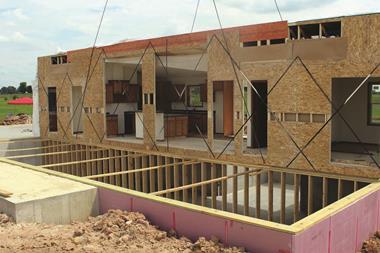After a tumultuous 2020, property’s leading figures share their hopes and expectations for 2021 as the year gets off to a rocky start with yet another lockdown.

George Roberts
Head of UK & Ireland, Cushman & Wakefield
We will look back at 2020 as the year Covid-19 accelerated the forces of change and shone a spotlight on people. For those that can interpret and take advantage of these changes, the opportunities will be enormous.
In 2021, landlords and occupiers will increasingly partner together to deliver office, retail and logistics space that is highly tailored to the needs of occupiers.
In the office sector, we can expect a rapid transition from delivery of just ‘the physical box’ to a step change in the services provided by landlords. We’ll also see increasing examples of both temporary and permanent new uses replacing income streams, with residential and logistics likely being the predominant permanent alternative uses.
To deliver change effectively, the role of the adviser needs to shift significantly. While intuition will always be a source of value, the ability to back this up with high quality analytics drawn from valuable proprietary data will be a prerequisite for an increasing number of clients.
At the same time, our industry must move forward in terms of diversity and inclusion next year. It’s not just the right thing to do, it’s a powerful multiplier of innovation and growth and those that don’t sit up and take action will be left behind.

Scott Tyler
Senior partner, Allsop
We desperately need business – particularly in hospitality, hotels, travel, food and beverage and leisure – to begin their return to pre-Covid levels. This would be a real fillip for the economy and mean we can keep unemployment levels in check.
I’d also be thrilled to see the capital markets and investment levels we have seen in Q4 2020 continue throughout 2021, and to see this backed up with renewed activity in the office leasing markets.
I expect that 2021 will be a tough year but a year of recovery. I’m certain we will see the office market stabilising, a renewed interest in well-priced non-fashion retail parks, and hopefully the return of some sectors that were hit hard during 2020, such as hotels and student housing. I anticipate that BTR will continue to grow apace and become an ever-more important sector for investors wanting balanced portfolios.
I think that attention will return to the high street, while big sites and department stores will offer interesting prospects for mixed use regeneration.

Jo Cowen
Chief executive and founder, Jo Cowen Architects
Last year was full of challenges, but with challenges come opportunities for us to learn and 2021 will give us the chance to do so. ESG was already coming to the fore last year but in 2021, it will be absolutely fundamental in terms of our new normal and the way we live, work and interact.
In the next five years, European ESG investments are forecast to increase significantly, representing nearly €8trn (£7.25trn) coming into the space.
The built environment accounts for 36% of all global carbon emissions and operational emissions account for 29%. Residential buildings are responsible for a considerable part of this. As investors, developers and architects we need to combat this by targeting net-zero in construction but also establishing robust operational net-zero solutions.

Alan Pepper
Chief finance officer and chief operating officer, essensys
Looking beyond the pandemic, the outlook for the flexible workspace sector is a positive one, with Covid-19 undoubtedly being a catalyst to changes in working patterns. Some uncertainty will continue into the first half of the year, though, as we wait for confidence to recover.
Video call fatigue and constant working from home have taken their toll and prior to the latest lockdown, office occupancy was increasing.
Corporate occupiers of all sizes are reevaluating their working arrangements and office requirements. The need for agility, varied locations, flexible terms and turnkey solutions should mean that flexible workspace options are increasingly the default option.
Property owners already active in the flexible workspace sector will continue to expand in a post-pandemic environment, recognising that the underlying structural drivers behind the sector have accelerated.
Landlord engagement in the sector has been increasing at all levels and we expect supply expansion though 2021, whether delivered directly by landlords, via an intermediary or through an agreement with a flexible workspace operator. Established operators are also looking beyond the pandemic and expanding again.
Technology enabled us all to operate remotely and will be a key enabler for returning to the office. It will also help to monitor occupancy, enable touchless access to services, increase operational efficiencies and deliver other workplace productivity improvements.
Continue to part eight here
Forecast for 2021: looking ahead with hope
- 1
- 2
- 3
- 4
- 5
- 6
- 7
 Currently reading
Currently readingForecast for 2021: looking ahead with hope (part seven)
- 8
- 9
- 10
- 11
- 12
- 13
- 14
- 15
- 16
- 17
- 18
- 19
- 20
- 21
- 22
- 23
- 24
- 25
- 26
- 27
- 28
- 29
- 30
- 31
- 32
- 33
- 34
- 35
- 36
- 37
- 38
- 39
- 40
- 41
- 42









































































No comments yet